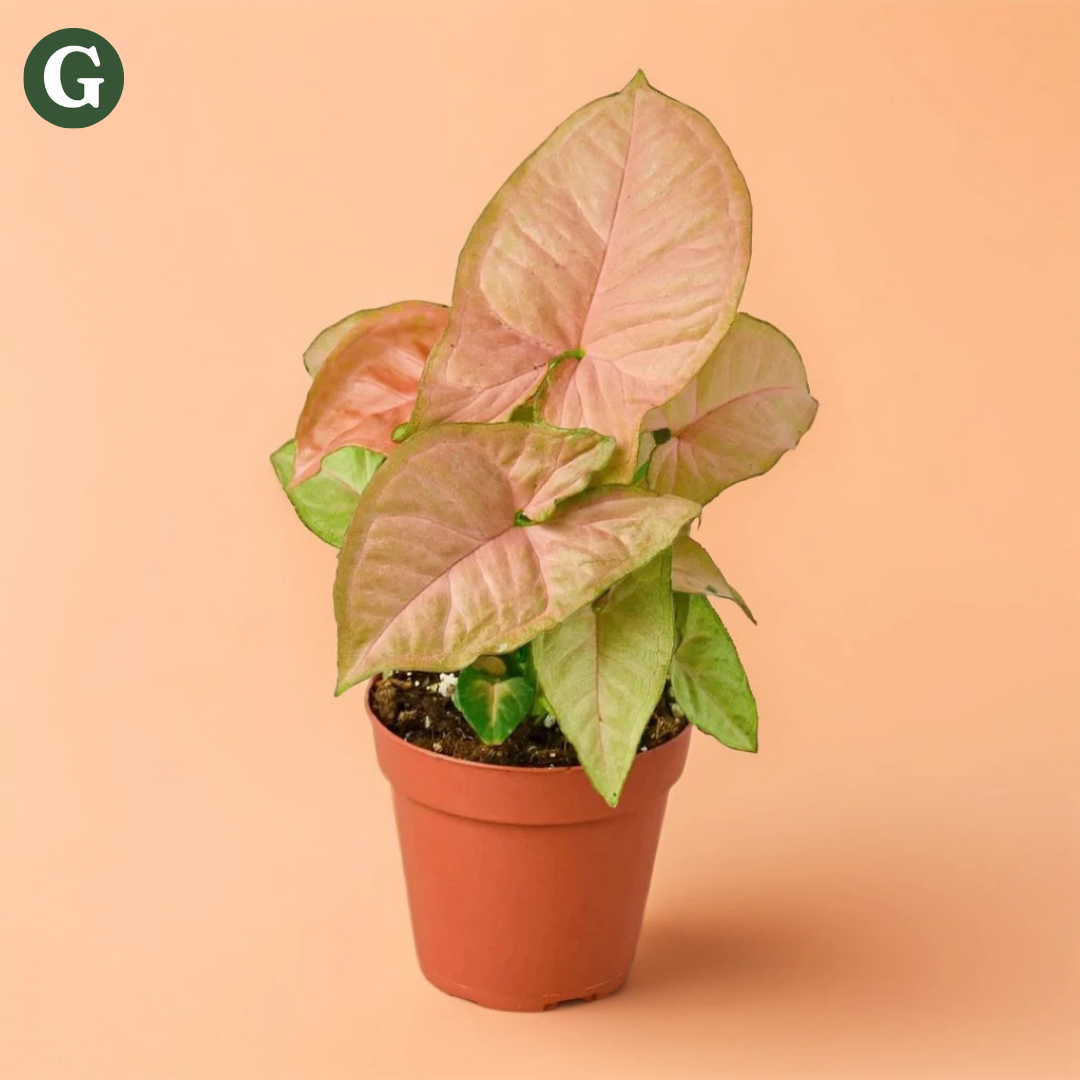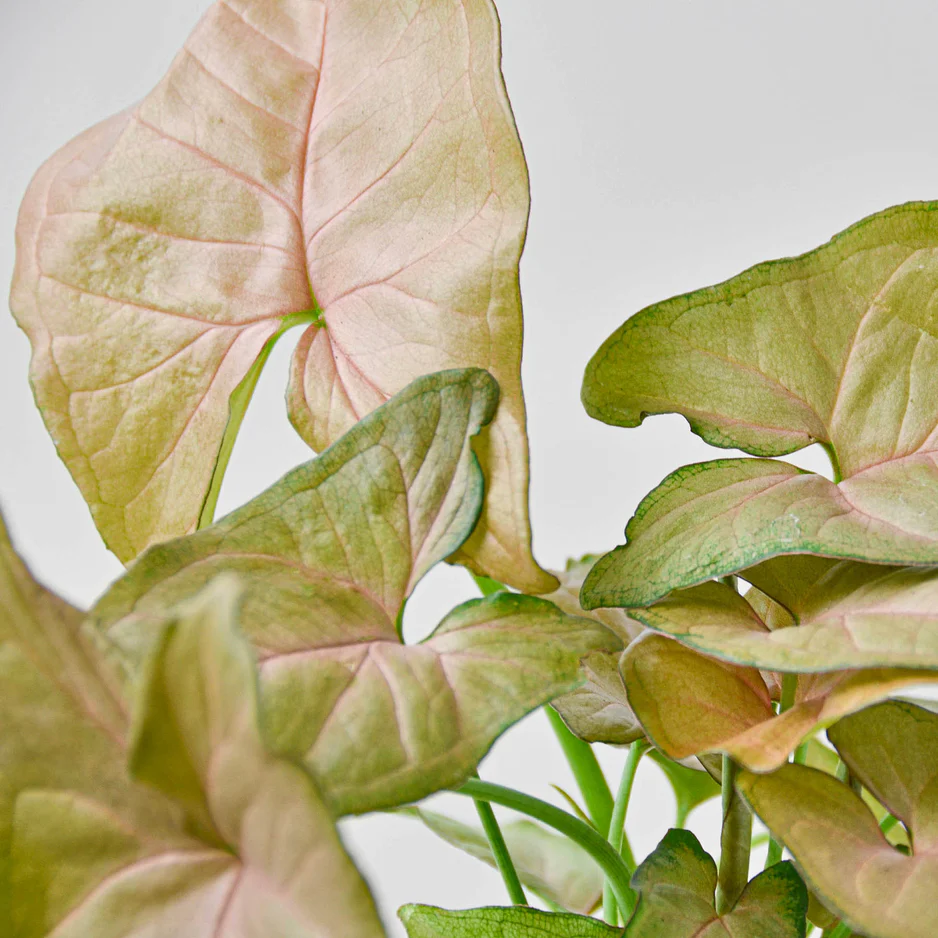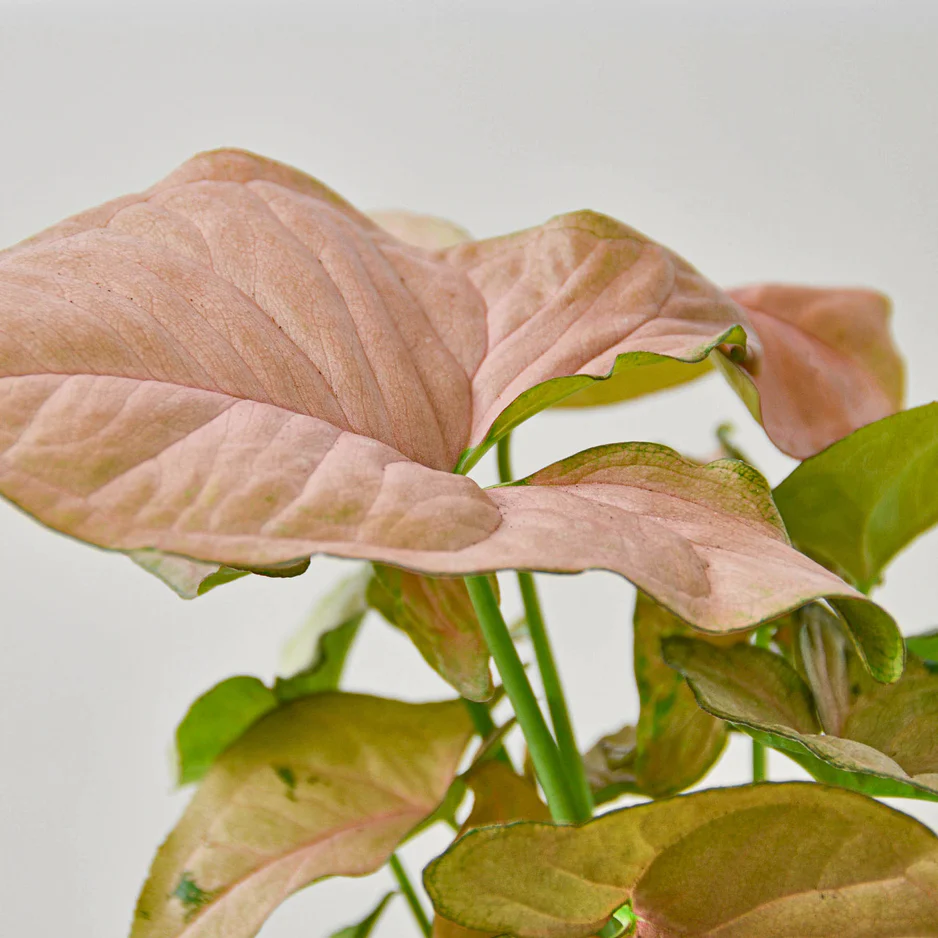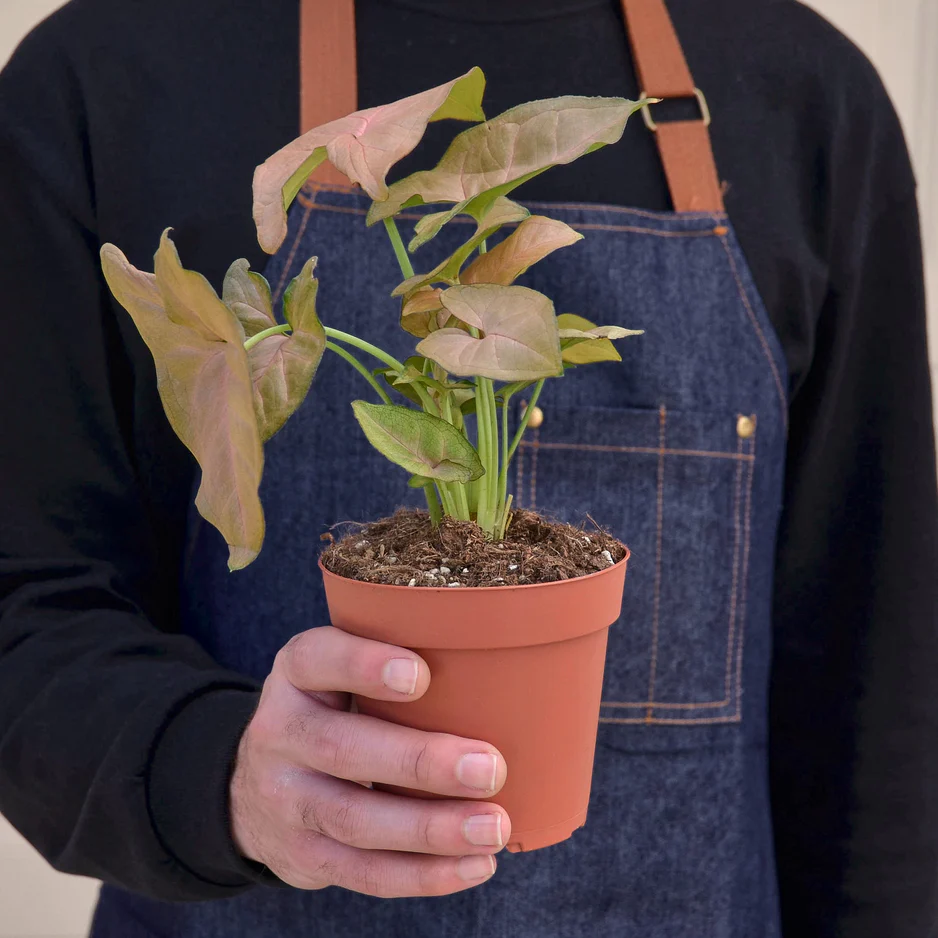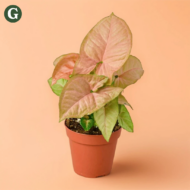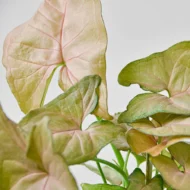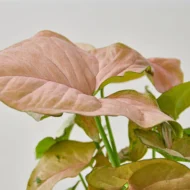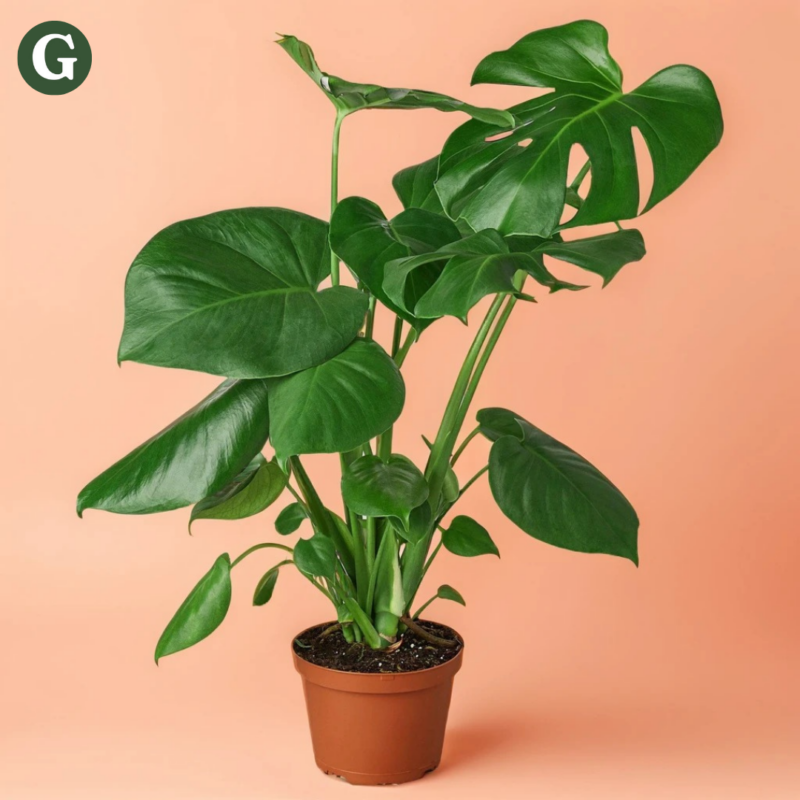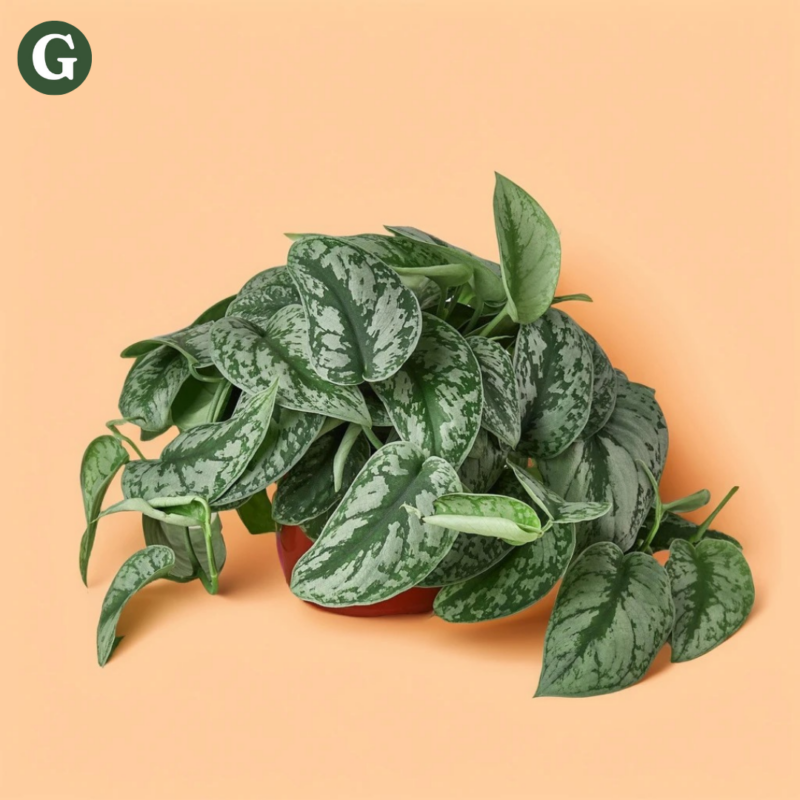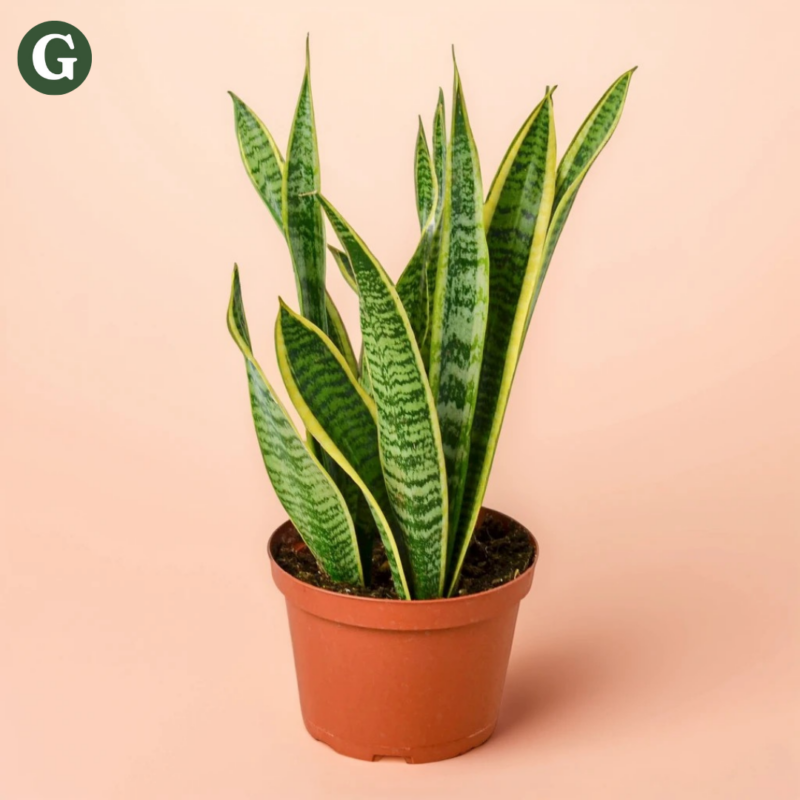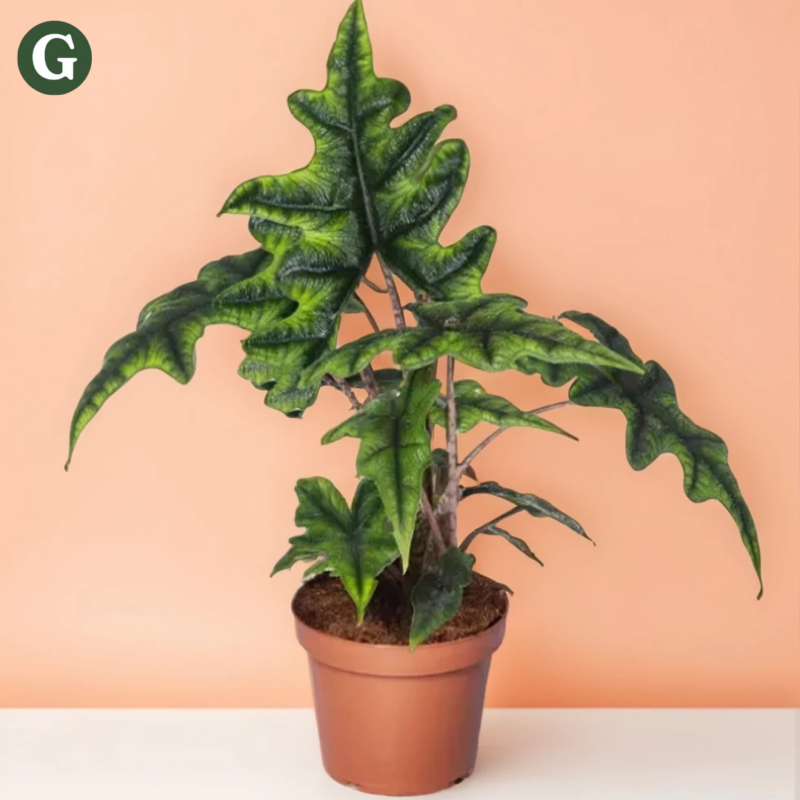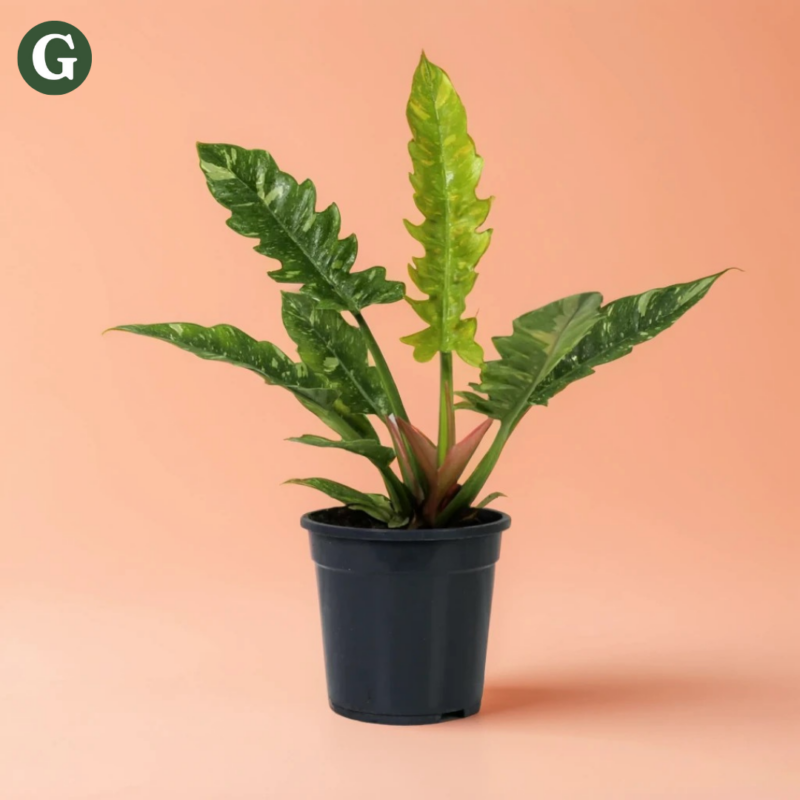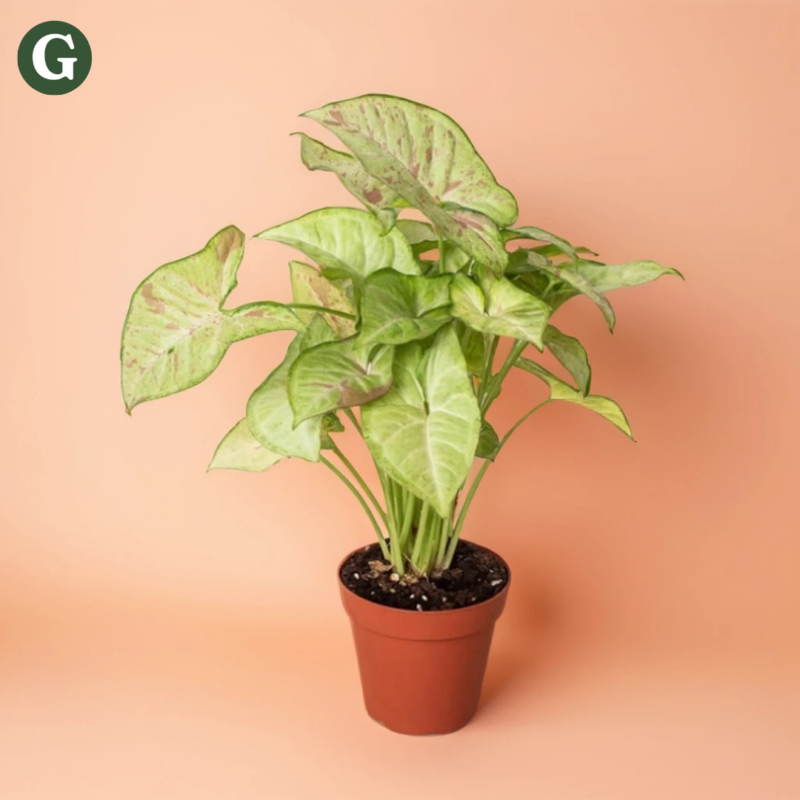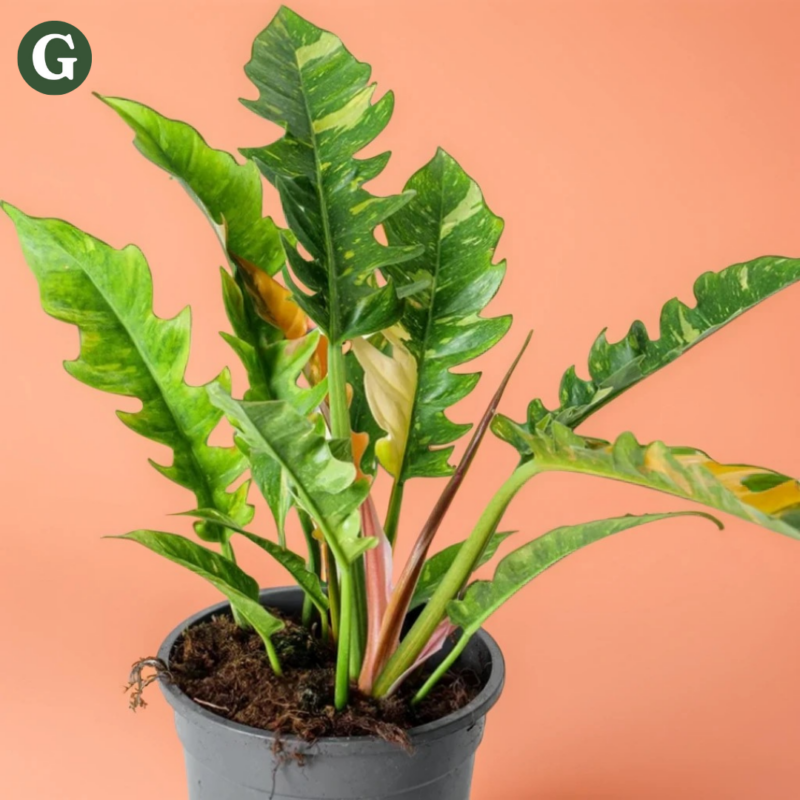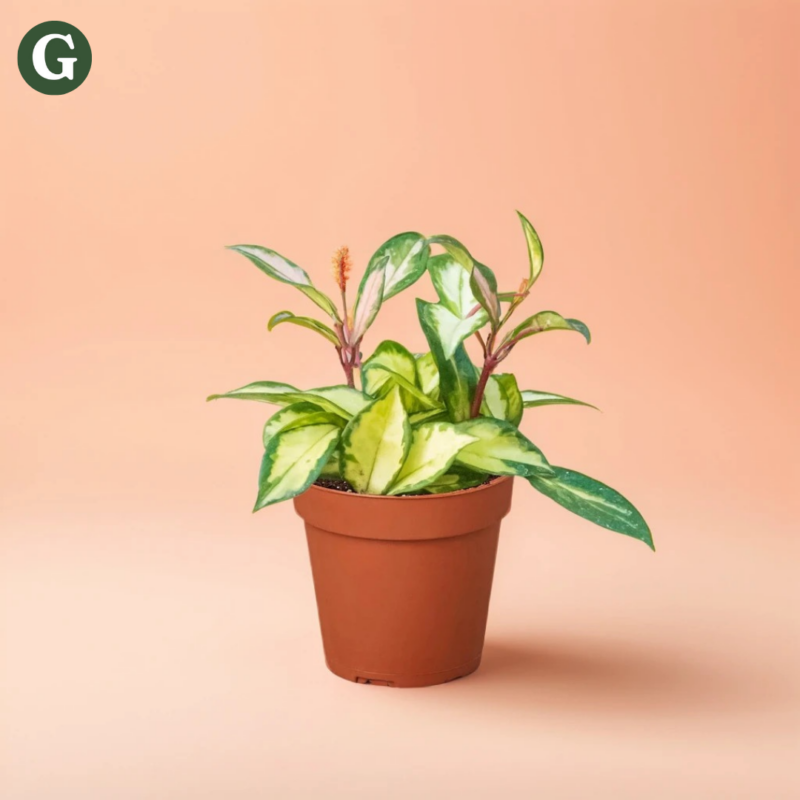Syngonium Strawberry
Botanical Name: Syngonium podophyllum 'Strawberry'
Common Name(s): Strawberry Arrowhead Plant
The Syngonium Strawberry, also known as the Strawberry Arrowhead, is a striking cultivar of the popular Syngonium podophyllum. This variety is admired for its unique, heart-shaped leaves that start as a soft pink or red and gradually transition into a light green as they mature. The vibrant color contrast between the new pink/red growth and the mature green foliage makes this plant a visually captivating addition to any indoor garden.
This plant is relatively easy to care for, making it a great choice for beginners or those looking for a low-maintenance yet decorative plant. Syngonium Strawberry thrives in bright, indirect light to maintain its colorful foliage but can tolerate low-light conditions. It prefers well-draining, slightly acidic soil and should be watered when the top inch of soil feels dry to the touch. Like other Syngoniums, it benefits from higher humidity levels, so it will thrive in kitchens, bathrooms, or areas with moisture in the air.
Air Purifying Qualities:
- Toxin Removal: The Syngonium Strawberry is effective at removing common indoor pollutants such as formaldehyde, benzene, and xylene, contributing to cleaner air in your home or office.
- Oxygen Production: Like other houseplants, it absorbs carbon dioxide and releases oxygen, improving indoor air quality.
- Humidity Regulation: This plant can help increase humidity slightly through transpiration, which is especially beneficial in dry environments.
Note: Syngonium Strawberry is non-toxic to pets (cats and dogs), making it a safe option for households with curious animals. However, as with all plants, it’s best to prevent pets from chewing on the leaves to avoid any potential digestive discomfort.
Care Insights & Expert Tips
- Fertilize regularly: Feed your Syngonium with a balanced liquid fertilizer diluted to half strength every 2-4 weeks during the growing season.
- Monitor for pests: Keep an eye out for common houseplant pests like mealybugs and spider mites. Treat infestations promptly with insecticidal soap or neem oil.
- Pruning: Prune your Syngonium regularly to encourage healthy growth.
- Propagation: Syngoniums can be easily propagated through stem cuttings.
- Unique leaf shape: Syngoniums are known for their distinctive, arrowhead-shaped leaves, which can vary in color and shape depending on the variety.
- Climbing or trailing: Syngoniums can be trained to climb a moss pole or allowed to trail.

Visit our plant care library
Find essential tips to keep your plants thriving, vibrant, and healthy.
